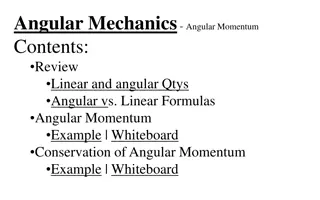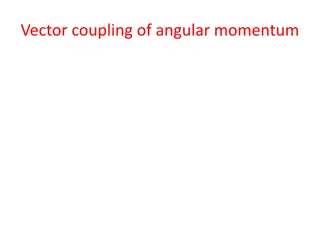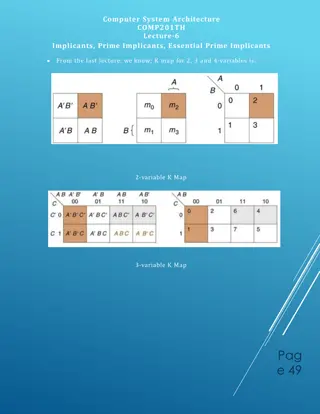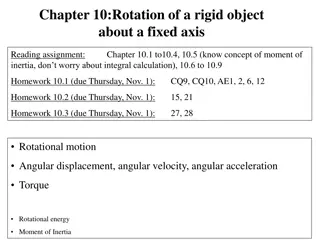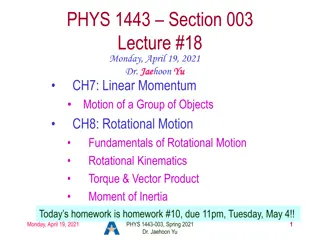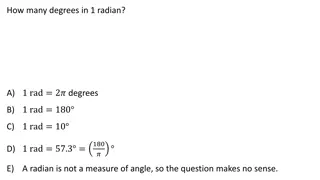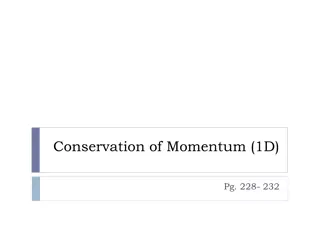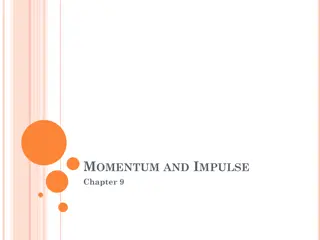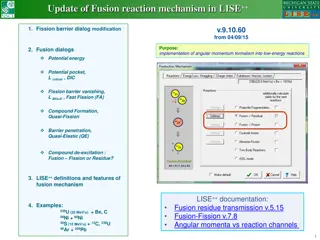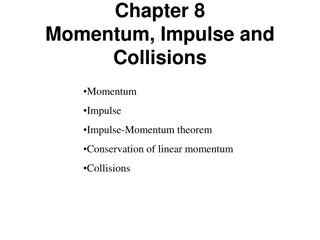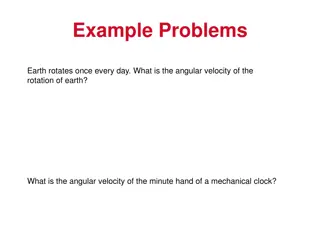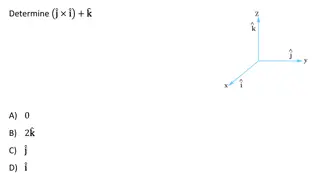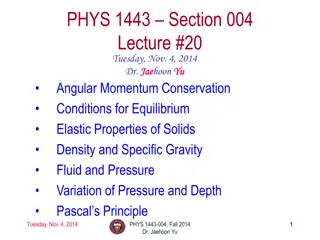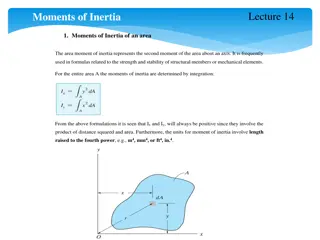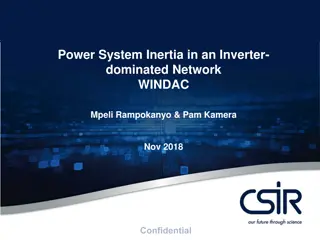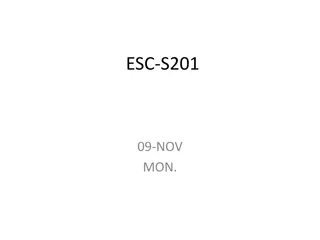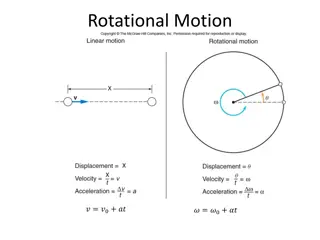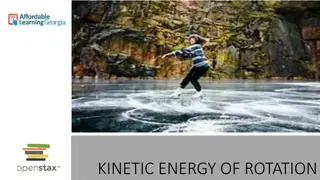Optimus Prime's Transformation Challenge: Angular Momentum and Moment of Inertia Exploration
Dr. Mark Huntress, a Chemistry and Physics professor, devises a transformative assignment on rotation. As Optimus Prime aims to rotate as fast as possible with minimal external forces, students explore whether he should transform into a disk, ring, or solid sphere. Through a four-part exploration involving angular momentum conservation and moment of inertia considerations, students reassess their initial choices and delve into the nuances of rotational physics.
Uploaded on Oct 07, 2024 | 0 Views
Download Presentation

Please find below an Image/Link to download the presentation.
The content on the website is provided AS IS for your information and personal use only. It may not be sold, licensed, or shared on other websites without obtaining consent from the author. Download presentation by click this link. If you encounter any issues during the download, it is possible that the publisher has removed the file from their server.
E N D
Presentation Transcript
A "Transformative" Assignment on Rotation: A Seemingly Simple Question Becomes an Epic Four-Part Exploration Dr. Mark Huntress Professor of Chemistry and Physics Patrick & Henry Community College
or ?
Optimus Prime, the Transformer hero, is rotating with negligible friction and negligible externally applied forces. He wants to rotate as fast as possible, so he transforms into a shape that is less spread out (like when you pull your arms in to rotate faster on a spinning chair). To end up rotating the fastest, AND to be able to angularly accelerate the fastest with a specific amount of torque, should he transform into a uniform disk / cylinder, a ring / hoop, or a uniform solid sphere?
Must understand that angular momentum is conserved and a lower I means higher angular velocity. Results of Part One (Students First Attempt): -Most pick sphere b/c of smaller fraction in eqn for I in table. -Significant contingent say disk because higher I means higher angular momentum
Part 2: Look at this and reconsider. A disk can rotate around multiple axes!
Results: On Part 2, vast majority of students change their answer to disk, since is lower than 2/5.
Part 3: Again, reconsider your answer. Realize that a disk is actually just a very short cylinder. For disk / cylinder of non-negligible length: Qs: In order for the equation I=1/4 MR2 to apply, what is the assumed length of the disk / cylinder? a. pretty much zero b. equal to R c. 12 times R If the length of a disk / cylinder approaches zero, its R must approach infinity. How would a higher R value affect the moment of inertia of a disk, the mass being the same? If Optimus Prime were to have a much higher R value as a disk rather than a sphere (lets say at least 2 times higher), could he possibly have a lower moment of inertia as a thin disk shape than as a sphere?
Results: On Part 3, a small minority of students are STILL convinced that he could have a smaller I as a thin disk!
Part 4: but he would not have a negligibly small length as a cylinder! Maybe R=L? If R=L for our cylinder, we could substitute L for R in the above equation and get: I = 1/4 MR2 + 1/12 MR2= 1/3MR2 1/3 < 2/5 so we are back to disk again as our answer? but R for this cylinder would not = R for sphere. Compare I for sphere to I for disk with equal R and L. The math: Assume an arbitrary volume of 100 arbitrary units for Optimus Prime. Find the radius he would have as a sphere by solving V=4/3 R3 for R: R =(100*(3/4)/ )(1/3) = 2.879 Next, find the L and R values that Optimus as a cylinder must have if L=R: V=L R2 becomes V= R3, and L= R = (100/ )(1/3) = 3.169 Now, moments of inertia can be compared. For the sphere, we find I=2/5 M*2.8792 = 3.316M. For the cylinder, we find I = 1/4 M*3.1692 + 1/12 M*3.1692 = 1/3 M*3.1692 = 3.348M. The disk/cylinder has 1% higher moment of inertia and we can t conclude it is the best answer!
Part 5: Function Optimization For Calculus-Based Class: Find the optimum dimensions of a cylinder by finding the minimum of the function I=1/4 MR2 + 1/12 ML2. First, define L in terms of R using V=L R2: L=V/ R2. I=1/4 MR2 + 1/12 M (V/ R2)2. Next, set the derivative of the function, dI/dr, equal to 0, to find the optimal R at the minimum I value, where the tangent line to the curve is horizontal: dI/dr = 1/2 MR + -4/12 M (V2/ )R -5 = 0 then cancel M: 1/2 R = 1/3 (V2/ )R-5 ; R-6 = 3/2 (V2/ ); R = (3/2 (V2/ ))-1/6. Keeping the value of 100 for the volume gives: R=2.962 Length in this case is L=V/ r2 = 100/( *2.9622) = 3.628. The moment of inertia of this cylinder comes out to: I=1/4 MR2 + 1/12 ML2 = 3.290M Compare to I of sphere (3.316M)
The Final Answer: Disk wins by < 1% !!! !!
Results: Students mostly get walked through parts 4 and 5.
Student Feedback: Mostly: Breaking the question down made it easier to understand Negative feedback: Too many parts of the assignment due one after the other on the same weekend I have a (sports game thing).


